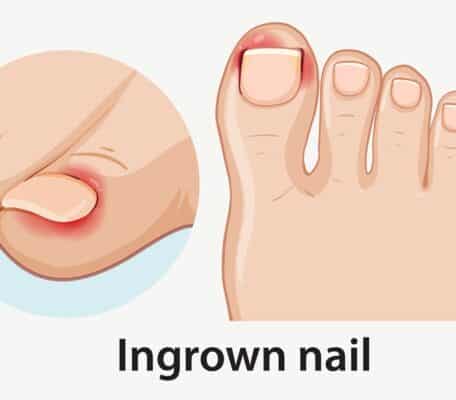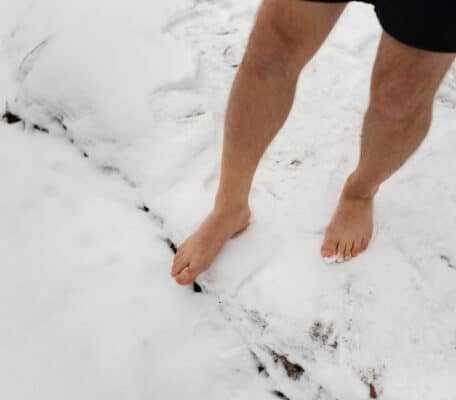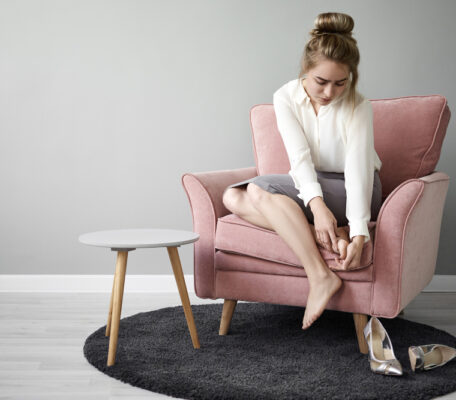As a person gets older, the threat of a fall can be a serious concern. A fall isn’t just a minor injury; for many senior citizens, a fall can have extensive consequences. There may be a serious injury, which can lead to a loss of mobility and independence. Fortunately, seniors can improve their balance and prevent falls with balance exercises.
Balance training offers a multitude of benefits. It improves strength, particularly leg and torso strength, which helps to improve overall stability. Balance training also increases safety by making it easier to stand up from a sitting position, walk about, and exercise. It helps seniors to get around more easily by improving their long-term mobility.
Balance training helps seniors to be more active so that they can continue to participate in the activities that they enjoy. As a result of all of these factors, seniors are able to be more socially connected and able to go out and enjoy spending time with their loved ones.
What Causes Falls and Balance Problems?
Losing your balance or falling can be scary; anyone who has slipped on wet or icy pavement knows the scary sensation of not being able to support yourself. This is a frightening reality for seniors.
In fact, 28 – 45% of seniors fall each year. Our sense of balance tends to get worse as we age. However, participating in balance training exercises can help to restore it.
There are some common problems among seniors that contribute to balance problems. One of the most common issues is a loss of vision. Vision tends to get poorer with age, and when we can’t see clearly, we are more likely to fall.
The legs and hips tend to get weaker with age, as well, which makes it difficult to walk comfortably. The spine can begin to degenerate, and posture becomes poorer. This makes it difficult to stand up straight, which interferes with mobility. It may also become more difficult to lift the feet up properly, which leads to trips and stumbles.
Reaction time tends to slow as we get older. Because of this slowed reaction time, it is challenging to avoid hazards and react appropriately in order to prevent falls. Low blood pressure and the use of prescription medications can cause dizziness or lightheadedness, which increases the risk of falls.
How Does the Balance System Work?
Every time a person stands up, walks, or climbs stairs, the brain, bones, muscles, and nervous system work together to keep them from falling. Our eyes provide us with visual cues, which give us information about the environment around us.
Our eyes alert us to hazards in the environment so that our bodies can react appropriately. The inner ear also plays an important role in balance. It has a canal filled fluid, which relays key information about the position of our heads in relationship to gravity and the space around us.
Internal spatial orientation is a term that refers to where our bodies are located in relationship to the space around us. Even if your eyes are closed, you know where your arms and legs are located in space thanks to your sense of internal spatial orientation.
Balance can be lost, but it can also be regained. The factors discussed earlier – poor vision, physical weakness, and medication side effects – can certainly influence balance. However, in many cases, inactivity is a major contributor to poor balance. Exercise and training can help you to improve and regain your sense of good balance.
How to Improve Balance
Improving your balance largely comes down to practice. We need to find the safest, most balanced position for our bodies. Many of us don’t regularly use the most balanced position for our bodies, and over time, that poor practice becomes a regular habit.
We need to change our practice to reflect a safer, more balanced position. The following exercises will help you to develop better balance habits.
Remember that these exercises are designed for people who have typical balance issues due to age and inactivity. If you suspect that you may have a more serious problem, such as vertigo, Meniere’s disease, or chronic dizziness due to a medication side effect, you should talk to your doctor about these problems before beginning a balance training programme.
These exercises should be performed under supervision. Do not move on to the next exercise until you can complete the current exercise safely. As you complete the exercises, be mindful of your posture.
- Keep your body weight and center of gravity positioned over your ankles. Change positions slowly and carefully, and hold on to a chair or other surface for stability during standing exercises.
- Single Limb Stance: Place a chair in front of you. Hold on to the back of the chair, and balance on one leg. Keep your center of gravity over your ankles. Balance for a few seconds on each foot, increasing the time as you are able. As you become more comfortable, trying hold on to the chair with only one hand. You can then progress to holding on with just one finger.
- Eye Tracking: This exercise focuses on improving your vision and vestibular system. Hold your thumb in front of your face with your elbow bent. Move your thumb from side to side and up and down. As you do this, follow your thumb by moving only your eyes, and not your entire head. Stop if this makes you feel dizzy.
- Grapevine: Stand in the kitchen with one hand holding on to the counter top. Walk a few steps forward, then turn around and walk back. Continue by repeating this motion for several minutes, and decreasing your hold on the counter top as you go. Keep going until you feel comfortable letting go of the counter top for a few paces.
- Heel to Toe: Stand while holding on to a railing or counter top. Walk forward, placing your feet heel to toe as you move ahead. Keep your head up and look forward, not down at your feet. Continue for the length of the railing or counter top, and repeat ten times.
- Balancing Wand: For this exercise, you will need something to hold, such as a cane, umbrella, or yardstick. Sit in a chair with your back straight, and breathe normally. Hold the object vertically in the palm of your dominant hand. Focus your eyes on the top of the object. You can make this more difficult by holding the object with your non-dominant hand or balancing it on the back of your hand.
These exercises may be difficult at first. If you have difficulty walking or use a cane or walker, be sure to only perform these exercises when someone else is present to assist you.
Start slowly, and increase the difficulty only as you feel comfortably able. You may not be able to do all of the exercises at first, and that’s okay. Remember that it is not a race.
It is also important to make sure that you are wearing shoes that are sturdy, comfortable, and supportive. Ill-fitting shoes can contribute to balance problems and increase the risk of a fall.
It is a good idea to visit a specialised shoe store to have your feet professionally measured and analysed. Our feet often change size as we age, and you may not be wearing the correct size shoes.
Visit the shoe store late in the day, when the feet tend to be most swollen. The professionals there will help you to find the proper size in a comfortable, supportive shoe.
If you have balance problems, visit Foot Solutions in your area. We will help you to find the right shoes & a custom arch support,that will improve your balance and give you a better sense of stability.



